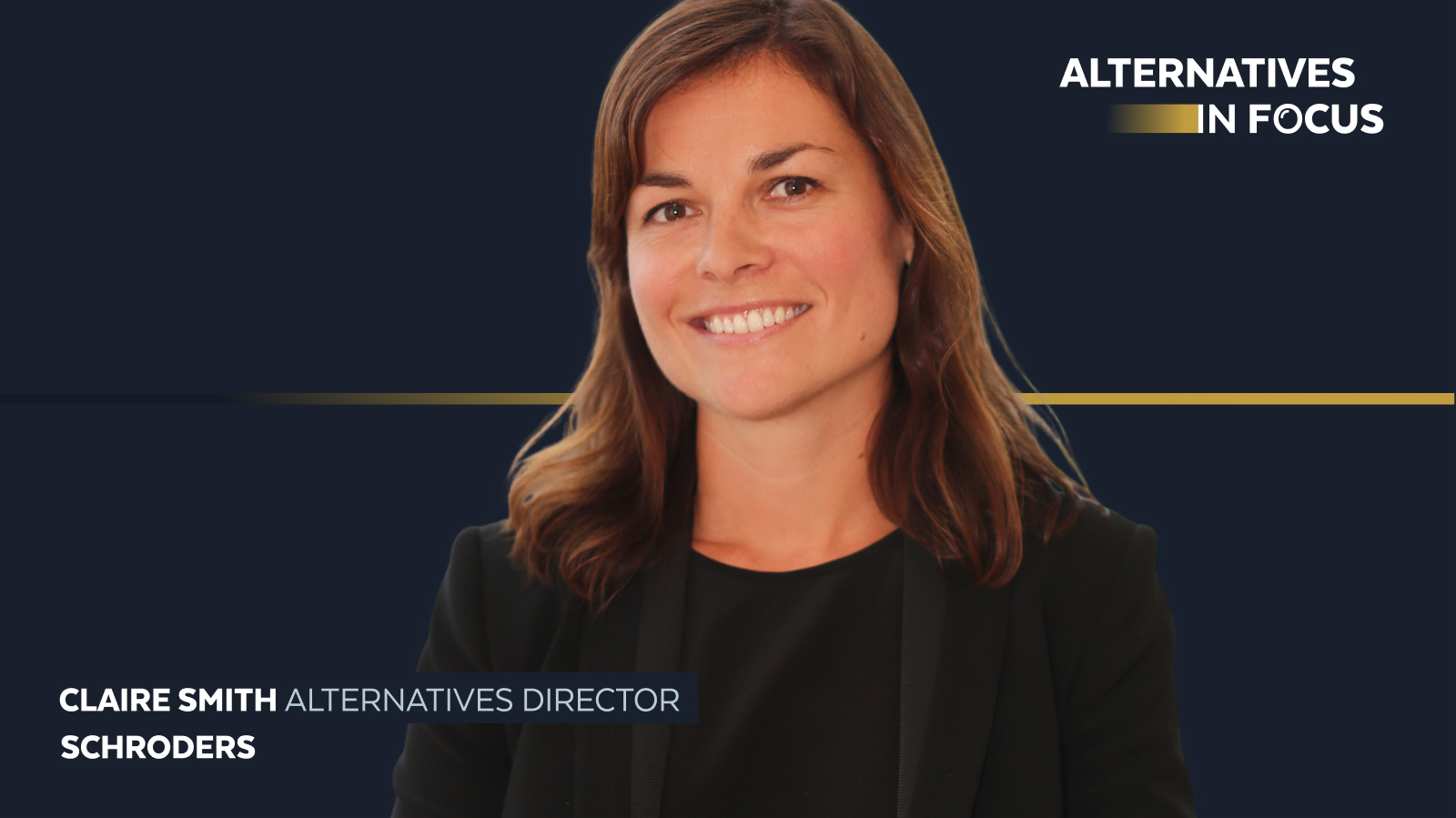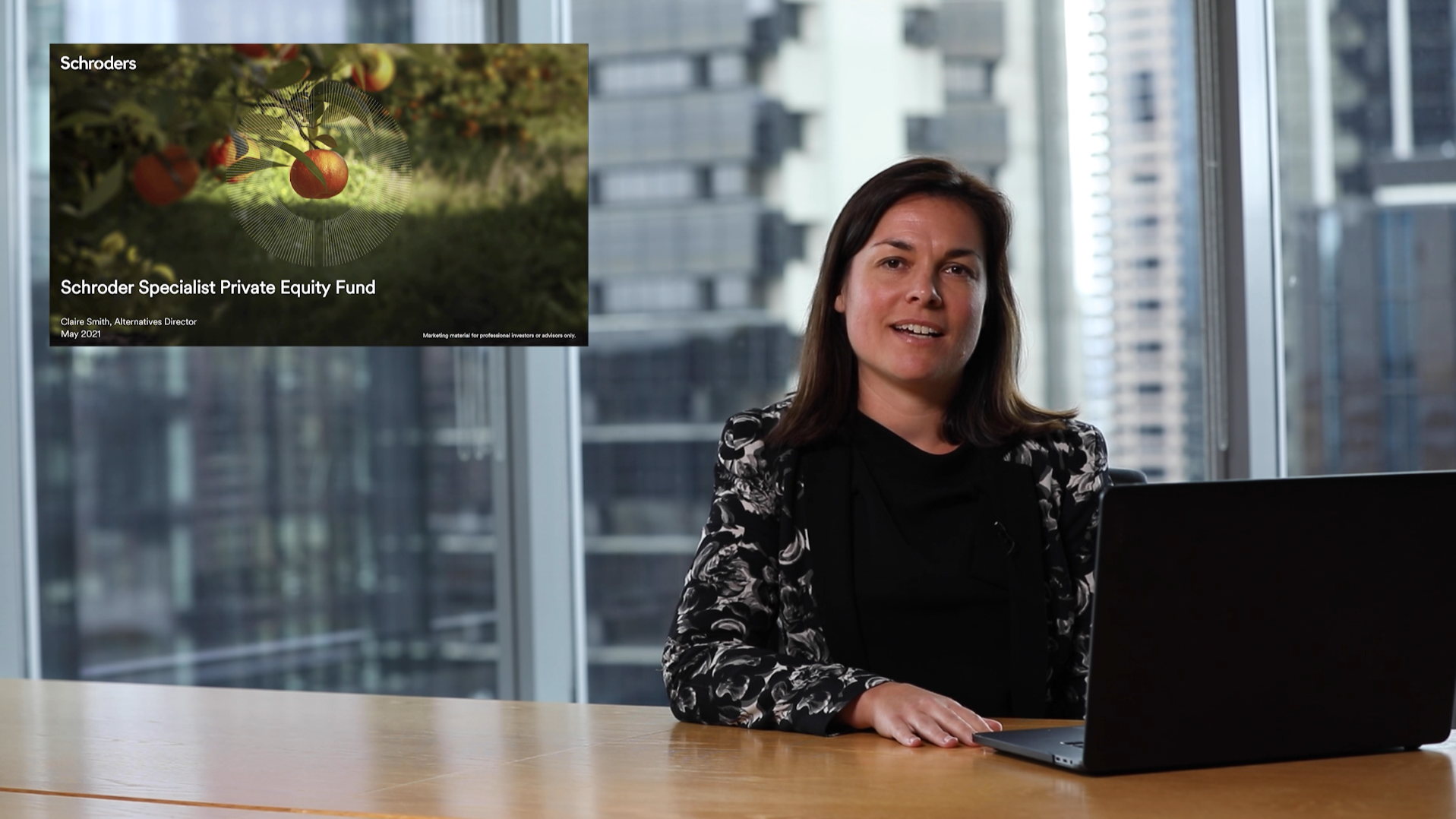The private equity investor using data to find value and avoid the hype
The NASDAQ 100 and ASX All Tech indexes are down around 30% for the year so far but private equity is seeing value in parts of the technology sector. That’s according to Schroders Australia's Claire Smith, alternatives director at the global multi-asset manager.
In the following interview, Smith speaks about the appeal of private equity during the current macro environment, as central banks hoist rates to combat inflation that’s topping 5% locally and 8% in the US. She also addresses questions about:
- The valuations of unlisted firms as funding costs rise
- A potential bubble in parts of the private equity asset class
-
Where she sees the best private market opportunities.
“The reduction in listed equity prices should really expose which managers have been over-paying in the private equity space and those that have held their mettle and invested sensibly,” Smith said.
“We believe our resilient performance throughout 2022 has shown we are indeed one of the managers who can invest and navigate sensibly through various economic cycles.”

Smith also details her experience of launching the Schroders Specialist Private Equity fund just before the pandemic hit, and what the current listed market rout means for the asset class. She explains why Schroders’ sweet spot of small and mid-sized buyouts (those ranging from sub-US$100 million to around US$350 million) is well-positioned. Smith also names a couple of other sectors – alongside technology – her team is most positive on currently.

Having launched the fund soon before COVID-19 hit, what are some of your main observations from this period?
We were quite fortunate with timing in that the underlying fund was established in September 2019 and we only made a handful of investments pre-COVID-19. This meant we entered COVID-19 with a large cash balance available for deployment, while already having an understanding of the “new normal” COVID-19 world.
I think the greatest surprise during COVID-19 was the bounce back in listed markets and the resulting aggression around pricing for certain deals and specific parts of the market.
Staying patient was the primary observation and our main lesson learned. There was a lot of capital chasing deals and we really had to hold the line and apply pricing discipline to ensure we invested at sensible prices. This meant saying no to a lot of opportunities but obviously, the deals you decline are as important (if not more so) than the deals you do.
What makes this asset class valuable now, in a rising inflation environment?
Our fund has a bias toward healthcare and technology companies that have natural pricing power. We have also been very careful, both in the run-up to COVID-19 and throughout, to ensure that companies we invest in have robust enough margins to withstand any transitory inflationary pressures. Additionally, we rotated out of cyclical consumer sectors in Europe and the US, where we didn’t predict strong GDP growth due to the overall macroeconomic environment. This preparation means we believe the fund will withstand an inflationary environment.
How are the valuations for unlisted firms currently looking – are they pulling back now that inflation is rising and “cheap money” is drying up?
We are very pleased that our fund has held up well throughout 2022 given the current listed market volatility, with our performance from the start of the year to 30 April 2022 (our last NAV date) sitting at 2.3%.
Since inception, we’re pleased to have delivered a net annualised return to our investors of more than 20% a year (after fees). Of course, past performance is not an indication of future performance, and investors need to conduct their own due diligence before deciding to invest.
Interest rates aren’t a big factor in our strategy as we don’t leverage our fund and prefer our underlying companies to have low leverage. Additionally, we already discount our future cash flows at very high levels (between 25% or 35% a year) so we don’t see a big impact from minor rate rises in our valuations.
Equity valuations will feed into the pricing and valuations of private equity markets, so the reduction in listed equity prices should really expose which managers have been over-paying in the private equity space and those that have held their mettle and invested sensibly. We believe our resilient performance throughout 2022 has shown we are indeed one of the managers who can invest and navigate sensibly through various economic cycles.
The CIO of one of Europe’s largest asset managers recently called out what he regards as a “bubble” in PE markets – what are your thoughts on this?
We agree certain sectors have experienced a bubble – particularly in the large buyout space and late-stage venture capital space. We have built a proprietary fundraising index that tracks flows of capital into private equity segments and the resulting returns, and this index warned us that large buyouts and venture capital have been overbought for several years now. In fact, our index currently shows that the only two segments of the private equity universe currently tracking below their long-term trend – which means they’re undervalued – are China and India.
We believe our data-led, specialised, global approach to PE has permitted us to build a portfolio of well-priced companies that we think will be able to deliver strong returns into the future.
Can you discuss some of your previous successes and failures?
A business services/consulting investment we made pre-COVID-19 ranks among our best successes so far. When COVID-19 hit, we actually reduced the valuation of the company, which is a German consulting firm that specialises in the IT sector. We made this change based on a view that consulting fees would normally be among the first things people reduce spending on during the (at the time) predicted recessionary environment. But the company picked up several contracts with the German government, where the consulting firm was hired to help with the transition to a work-from-home environment.
Government contracts are very “sticky” (they tend to be solid agreements with long duration) and quite remunerative. The consulting firm has also subsequently picked up other German government contracts, for example, being nominated as the software provider supporting passport activation. Having become a key strategic partner to the German public sector is a strong tailwind that has facilitated an exit that will see us make a more than six-fold return on the money we invested just two-and-a-half years earlier.
On the other side of the ledger – though we haven’t had any real failures in this fund so far (touch wood!) – is an experience we had with a small Italian buyout manager. We invested with this manager for the first time in 2004, based on the excellent track record of the founder. It was also a fund manager that rigorously followed a “buy and build” approach and focused on emerging companies in Italy with high internationalisation potential.
Shortly after the first planned and completed exits, combined with the first returns to the limited partners, the general partner launched its second fund. There was intense competition among the many international institutional LPs seeking access to the fund. This competition was spurred by the fund’s status as the best small buyout fund in Italy at the time. Its fundraising was very fast and the investor base consisted of well-known European LPs and private equity funds of funds, among others.
But subsequently, the fund invested the capital too quickly and the entire fund size was invested in cyclical companies in the first two years. We learned several lessons from this, namely:
- Keep a close eye on the increase in fund volume and investment velocity
- Ensure the platform and team grow at the same rate as the fund volume
- Closely watch the cyclicality of the portfolio and the risk associated with it
- Constantly review governance guidelines.
What opportunities do you see in the current market environment?
We continue to see strong opportunities in our key area of PE focus, which is in small to mid-sized buyouts and growth opportunities in Asia.
We also see strong deal flow and good opportunities in the general partner-led secondary market, where we can work with our key primary relationships and identify strong companies with exceptional future growth potential. Extending an investment in a strong company you already know well can compensate for some of the current market challenges.
Where does this type of strategy fit within a portfolio, and what is the ideal investor type?
The fund is ideally suited to investors seeking growth and diversification and with a long-term investment horizon. We tend to see most advisers using it as a satellite component for their clients, those who can handle some illiquidity within their overall portfolio and are seeking a diversified growth option.
At its core, this is simply an international equity exposure, but its liquidity profile always needs to be discussed to ensure clients are comfortable with the liquidity (or potential lack thereof) within the fund.
In which sectors do you expect to see some of the biggest deals over the course of 2022 and into 2023?
Our focus will continue to be in the healthcare and tech sectors, which we feel will be well placed to withstand any market volatility. We are also looking for opportunities in the “industrial 4.0” sector, which includes automation, de-globalisation of industrials, and with a high-technology angle. We also see potential opportunities in the consumer specialist sector in the US.
Access a new way to generate returns
The Schroder Specialist Private Equity Fund helps investors with a suitable risk tolerance achieve potentially higher returns and greater portfolio diversification by accessing the often hard-to-reach global private equity markets. To learn more, fill in the contact form below or visit our website.

2 topics
1 fund mentioned
2 contributors mentioned


